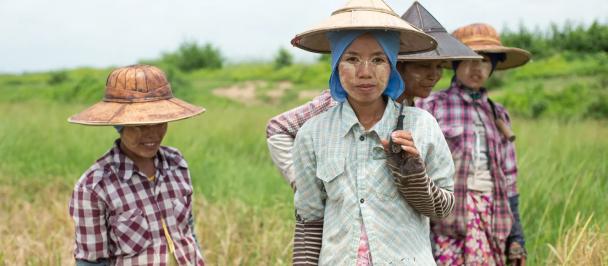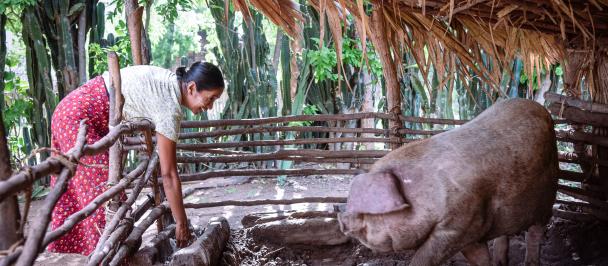Despite Myanmar’s political crisis and widespread insecurity, UNDP is finding ways to protect the natural environment and improve livelihoods.
How beekeeping and clam farming are reducing poverty and protecting Myanmar’s mangroves
October 12, 2023
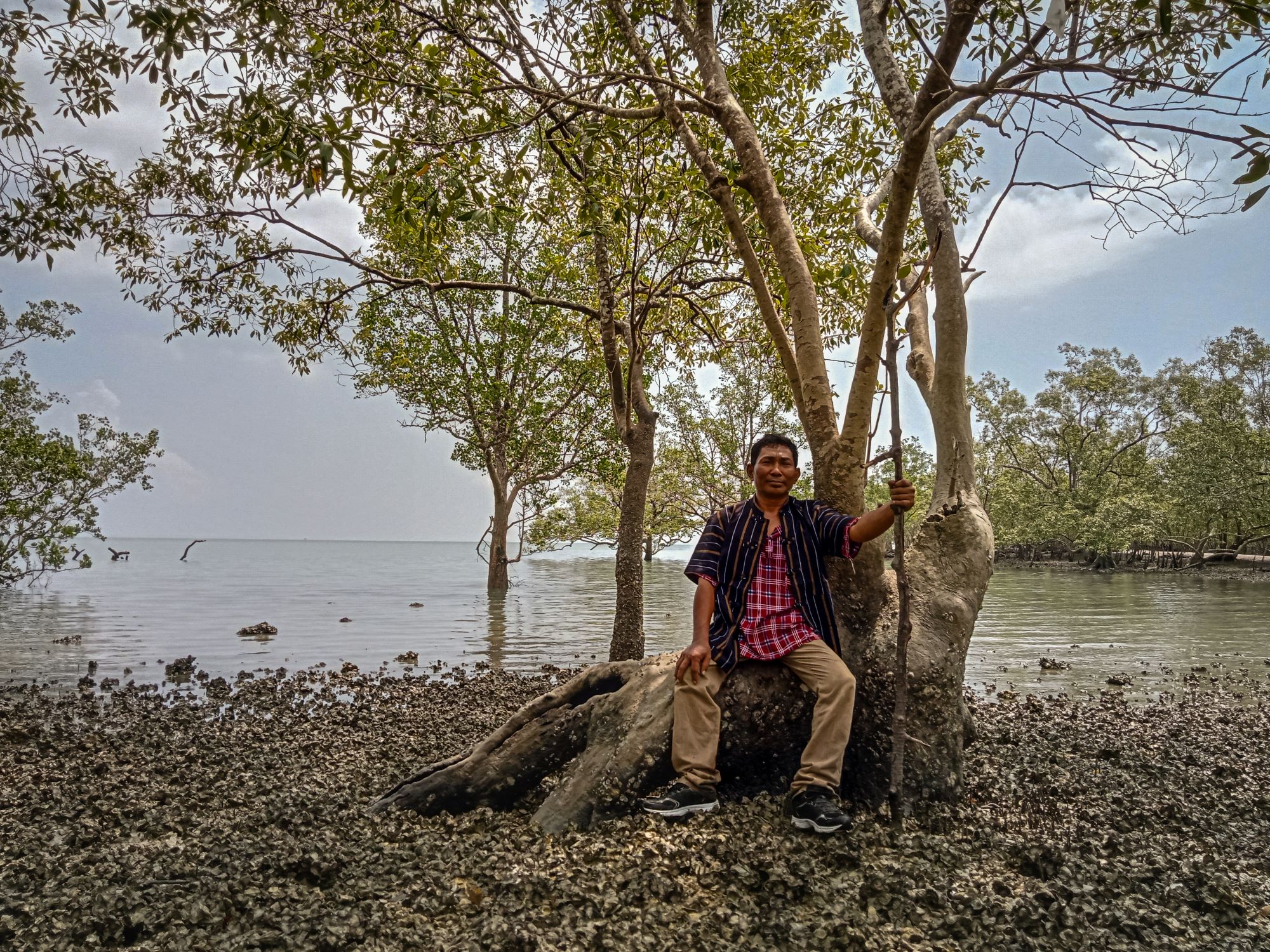
U Myo Oo in a mangrove in Myanmar's Tanintharyi Region
In 2012, U Myo Oo experienced a turning point in his life. He was working as a high school teacher in his village in Tanintharyi Region’s Myeik when a private seafood company cleared 400 acres of mangrove forests along the shoreline to set up a shrimp farm.
These mangroves were critical habitats for protecting fish and shellfish. Once they were destroyed, local fishers saw their catches drastically reduced, significantly impacting their livelihoods.
"This served as a wake-up call, igniting my determination to protect these vital ecosystems and initiate the formation of community forests within these villages,” Myo said. He gave up work as a teacher, established the organization Green Network Tanintharyi Region, and started campaigning and educating people in neighboring villages about the threats posed by the destruction of mangrove habitats.
One major victory was stopping that same seafood company from acquiring a further 700 acres of forest in 2016, and his lobbying helped mobilize support for the cause.
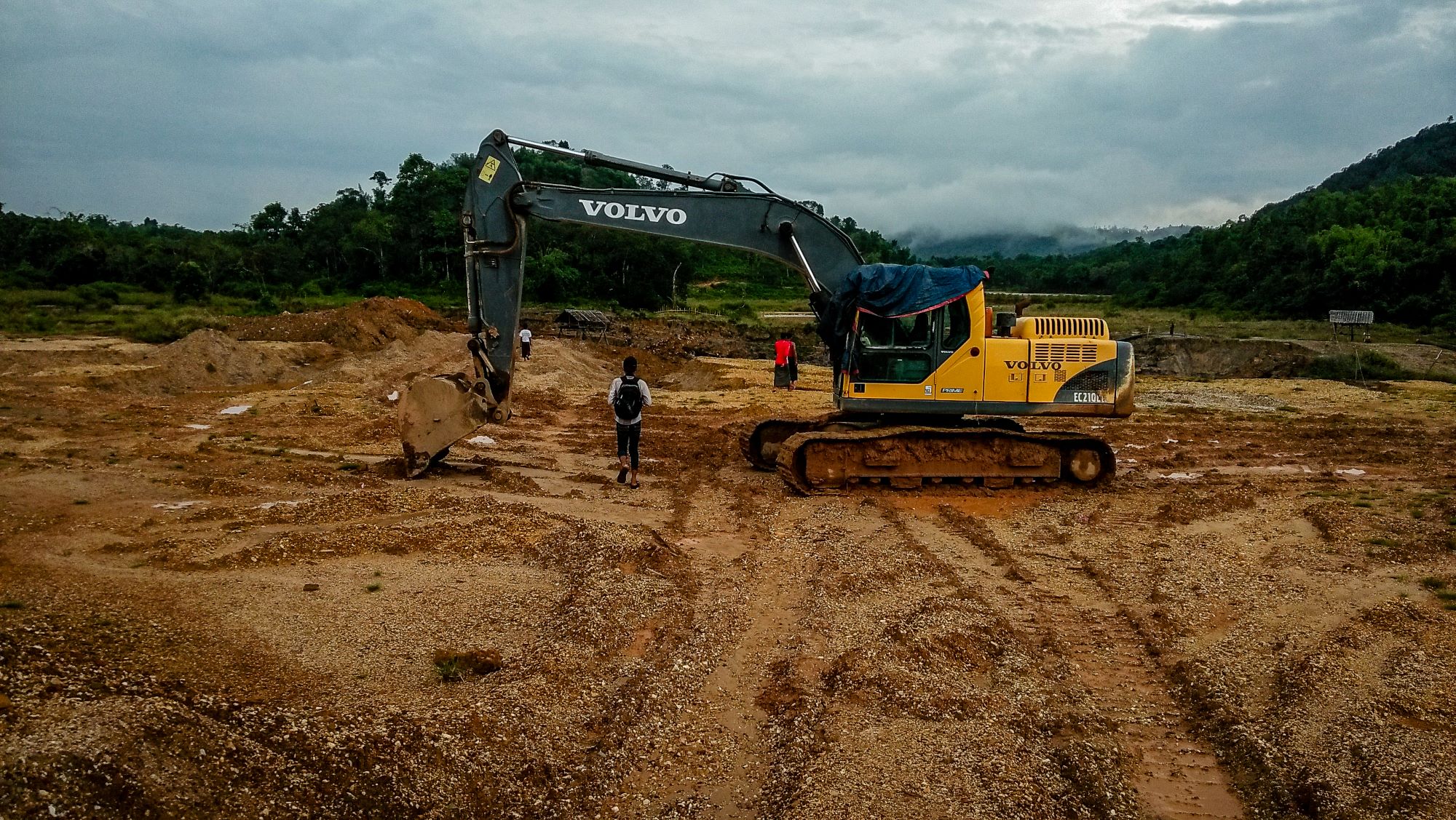
A bulldozer clears mangrove forest to establish a shrimp farm.
Myanmar’s mangroves, stretching from Rakhine State, along the Ayeyarwaddy delta and down to Tanintharyi Region, are among the most extensive in south-east Asia, covering an estimated 4,450 square kilometers in 2020.
They both provide a livelihood for those inhabiting coastal areas and serve as vital sea defenses, acting as a natural bulwark against tidal surges, cyclones and fierce winds, which are increasing in frequency and severity as Myanmar endures the impacts of climate change.
Mangrove forests’ roots bind coastal soil to prevent erosion, and they store a substantial amount of carbon, helping to offset global carbon emissions. Preserving them reduces damage from extreme weather events and sustains critical biodiversity, including fish stocks that local communities depend on for their livelihood.
Yet Myanmar’s mangroves are among the most under threat in the world. The National University of Singapore estimated that nearly two-thirds were deforested between 1996 and 2016 due to conversion to other uses, such as rice, palm oil, and rubber production.
Despite being illegal, charcoal kilns are a common sight. The popularity and high prices that Tanintharyi Region’s mangrove charcoal fetches are a significant challenge, giving locals an incentive to chop down the forest wood at a time when Myanmar’s economic struggles mean other job opportunities are limited, which is also emptying villages of younger people who travel to Thailand where they can earn higher incomes.
Strategies to reverse this trend are desperately needed. Yet Myanmar’s political crisis and widespread instability since the military took power in 2021 has hindered activities to address environmental issues, with systems in place to protect habitats weakened, funding diverted to other initiatives and civil society operating in a much more challenging environment.
"Non-compliance with community forest rules by some locals due to a lack of oversight to safeguard these mangroves and security concerns when expanding into new villages are among the hurdles we must overcome," said U Myo Oo, adding how many international organizations worked on mangrove protection, but they have withdrawn since the military takeover.
Despite this, UNDP is finding ways to protect the natural environment, improve people’s livelihoods and reduce poverty. We have been working with local organizations, including Green Network Tanintharyi Region and the Myanmar Environmental Rehabilitation-conservation Network, to help people see intrinsic value in their local mangrove forests and preserve those habitats.
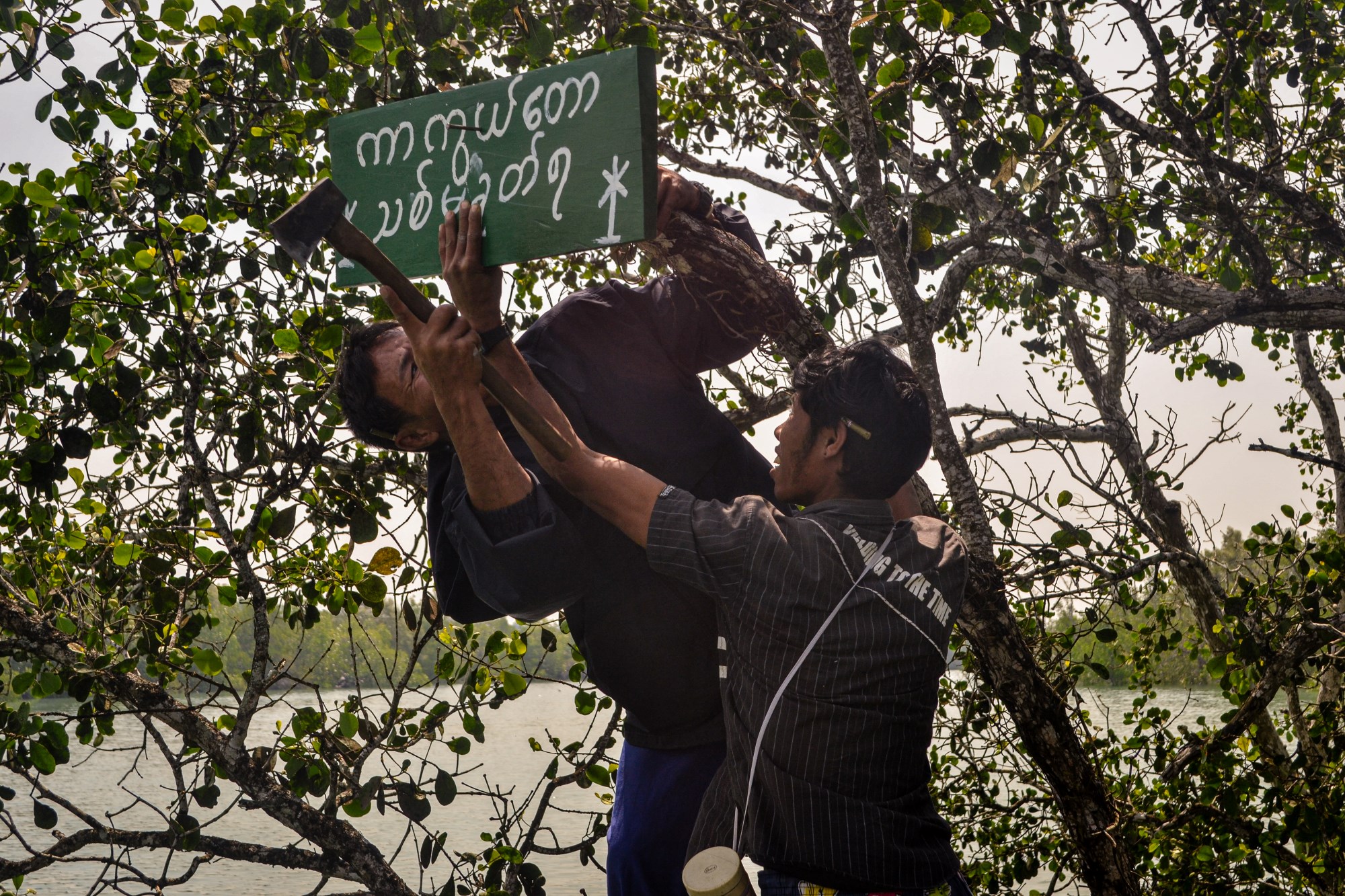
The sign says: "This area is protected. Do not cut down trees."
"It became imperative to introduce mangrove-friendly livelihood activities for the villagers. Without sustainable sources of income, there was a concern that they might resort to chopping down and selling mangroves," U Myo Oo said, explaining that people would value mangroves more if they derived an income through them.
"This led to community forest enterprise activities, including producing honey, crab and clam farming, and making kan zaw oil, a traditional medicine from the Myeik area."
Farming blood clams in the shallows
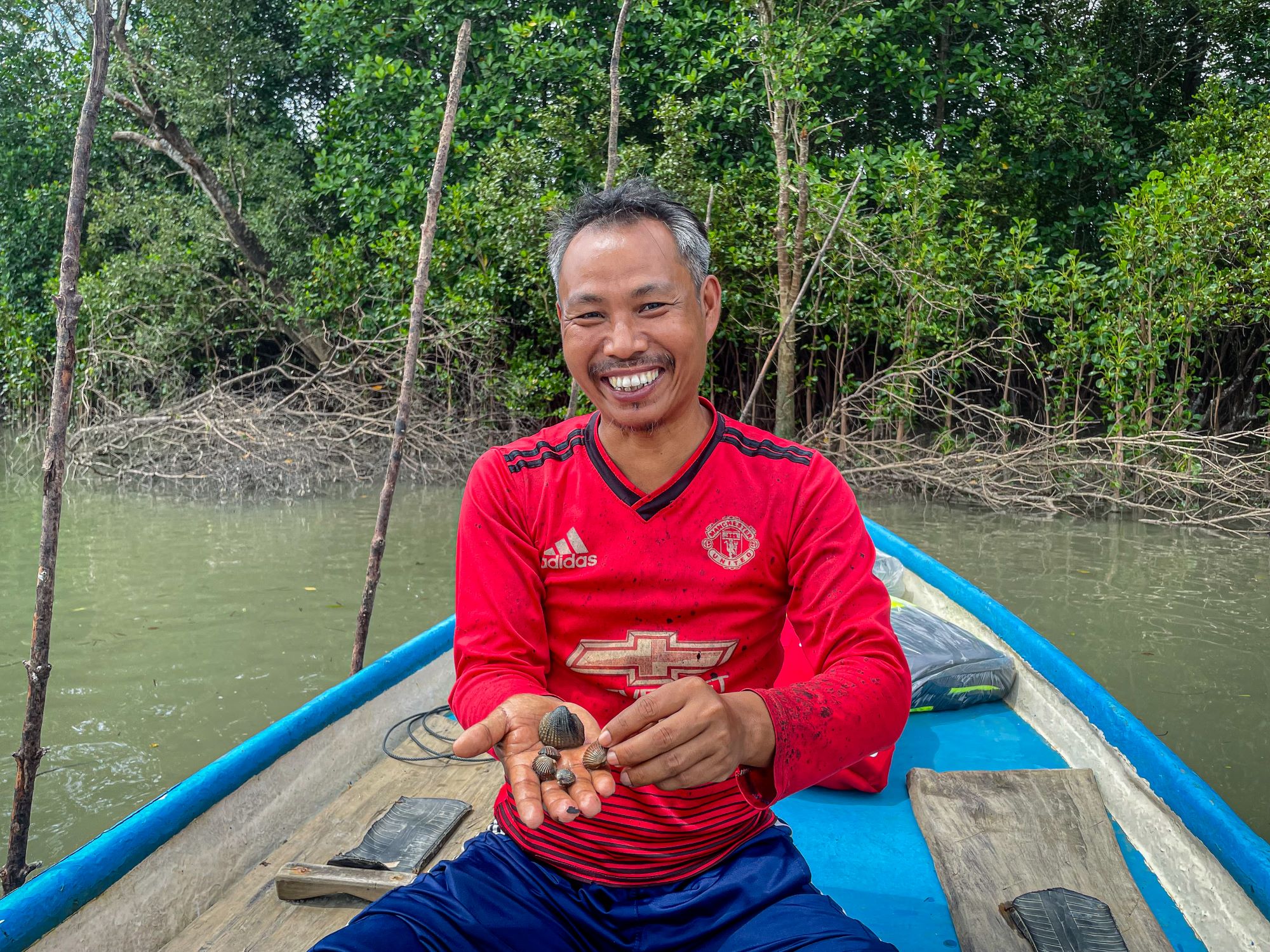
U Tun Kyaw Aung holds farmed blood clams in his hand
U Tun Kyaw Aung is now farming blood clams in the mangrove forest in his village in Myeik. UNDP and its partners provided the training and 5,000,000 Myanmar kyats ($3,000) in start-up funds.
"We set up bamboo poles in the water to create a protective enclosure. A green plastic netting then surrounds this enclosure. The next step involves breaking up and softening hard mud, as clam larvae can only thrive in very soft mud. Then we can begin the clam harvesting process. But we must conduct daily checks, as natural predators such as fish, snails, and crabs can infiltrate the farm and eat our clams,” he said.
"After six months of hard work, we can finally take the clams to the market. They are picked, sorted, bagged, and then sold."
Although they did not turn a profit in the first year due to predators eating the clams, they have received further training on managing these pests and employed someone whose job it is to monitor the clams. If the three-year project succeeds, the community can potentially make more than five times the investment in profits, some of which will be used for mangrove conservation, community development, and education.
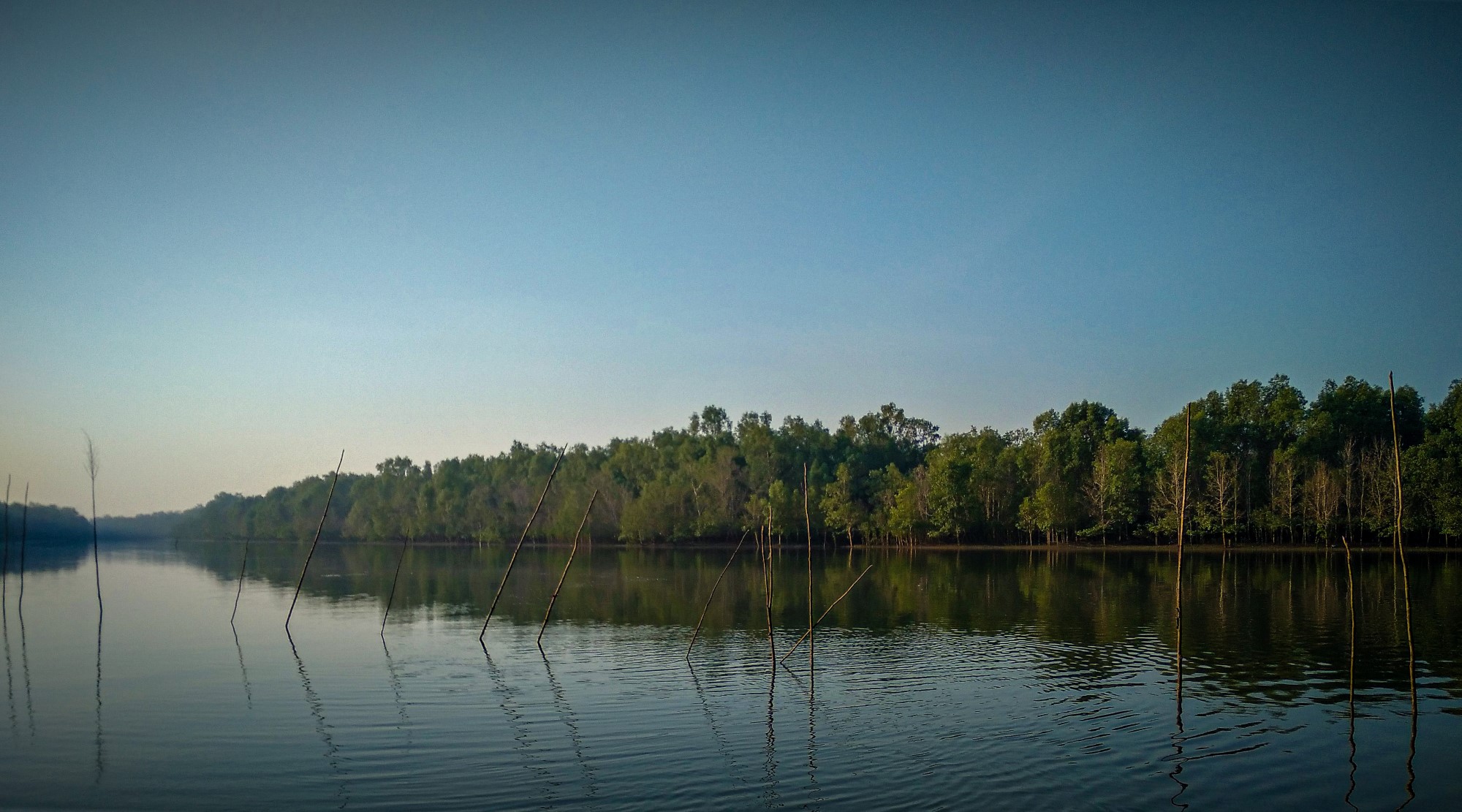
A blood clam farm in Kar Par Ni community forest
The profits give Daw Ni Ni Ni San hope for her 15-year-old son’s education.
"He's passionate about fashion design and dreams of becoming a designer. Supporting his aspirations, I intend to enrol him in one of the fashion design schools in Myeik," she said.
Beekeeping in the branches
In another village, 50 people harness their nearby mangrove community forest to make organic honey, hanging beehives from the trees. This is providing an essential income for Aung Ko Ko’s family.
"With just four or five acres of land where I cultivate rubber, betel nuts and coconuts, I often struggled to earn a sufficient income. At times, I had to work as a day laborer on other people's farms,” he said.
Now, he looks after 20 beehives. After five months, Aung Ko Ko earned 500,000 kyats ($240) from selling the honey. For every 10 bottles of honey sold, the proceeds from one bottle are invested in the community enterprise, covering the costs of security patrols and management of the mangrove forest.
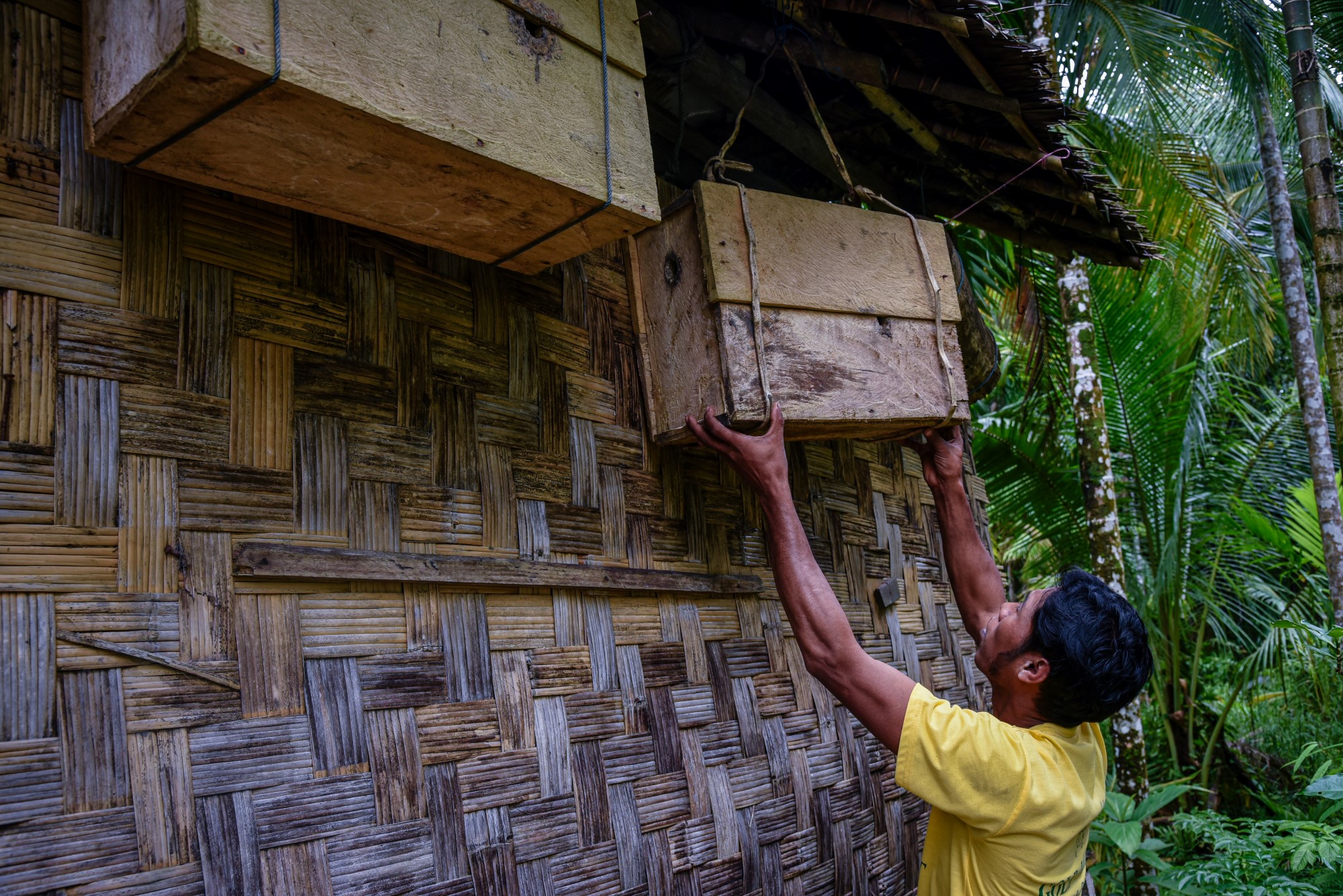
Aung Ko Ko keeps the beehives dry beneath his roof during the rainy season – they can only produce honey from the start of the dry season from November to May
"I earned this income without any upfront investment thanks to the support from UNDP. I am so grateful for this opportunity and eagerly anticipate the upcoming bee season to repeat this success," Aung Ko Ko said, adding how he uses the money to buy food and other essentials for his family.
"I am eager to share my experiences and knowledge with fellow community members interested in beekeeping, to provide guidance, share dos and don'ts, and help others embark on their beekeeping journey."
Titon Mitra, UNDP Myanmar Resident Representative, explained: "While it may not be possible to enact change at a nationwide scale, community by community, UNDP is improving both the landscape and the lives of those most at risk to the economic and climate change challenges afflicting Myanmar."
UNDP, with funding from the Government of Norway and under the ENCORE project, has provided 20 communities with business and forest management training, funding and equipment to help develop livelihoods that value and protect mangroves, covering over 11,000 acres of forests in Mon State and Tanintharyi Region and a population of more than 33,000.

 Locations
Locations